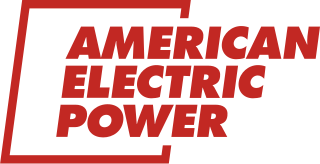History
UI’s roots can be traced to 1881, with the founding of the New Haven Electric Lighting Company, established to provide electric lighting to the city of New Haven. The company had a troubled start and in 1883 was reorganized as the New Haven Electric Company.
In 1899, the New Haven Electric Company, under the leadership of James English, acquired the Bridgeport Electric Light Company. The new company, renamed The United Illuminating Company, flourished in the new century as Connecticut became an important manufacturing center, and UI’s franchise spread outward from the cities of New Haven and Bridgeport to outlying towns. Regulated as a utility, UI for many years exclusively owned and operated the electric generation, transmission and distribution facilities in the greater New Haven and Bridgeport areas. [1]
In 2000, as a result of Connecticut’s 1998 deregulation legislation, UI was required to sell its electricity generation plants, including the facilities at New Haven and Bridgeport harbors, and to divest from other generation projects including the Connecticut Yankee and Millstone nuclear power plants.
In that same year, UI became a subsidiary of UIL Holdings Corporation, a New Haven-based corporation structured to hold both the regulated UI and other non-regulated business entities.
UI continues to own and operate the transmission and distribution delivery infrastructure within its 17-town service territory. (*)

The electric power industry covers the generation, transmission, distribution and sale of electric power to the general public and industry. The commercial distribution of electric power started in 1882 when electricity was produced for electric lighting. In the 1880s and 1890s, growing economic and safety concerns lead to the regulation of the industry. What was once an expensive novelty limited to the most densely populated areas, reliable and economical electric power has become an essential aspect for normal operation of all elements of developed economies.
NSTAR was a utility company that provided retail electricity and natural gas to 1.4 million customers in eastern and central Massachusetts, including the Boston urban area. NSTAR became a subsidiary of Northeast Utilities in April 2012. In February 2015, Northeast Utilities and all of its operating companies became one large company known as Eversource Energy.
Eversource Energy is a publicly traded, Fortune 500 energy company headquartered in Hartford, Connecticut, and Boston, Massachusetts, with several regulated subsidiaries offering retail electricity, natural gas service and water service to approximately 4 million customers in Connecticut, Massachusetts and New Hampshire.

Emera Incorporated is a publicly traded Canadian multinational energy holding company based in Halifax, Nova Scotia. Created in 1998 during the privatization of Nova Scotia Power, a provincial Crown corporation, Emera now invests in regulated electricity generation as well as transmission and distribution across North America and the Caribbean.
Fortis Inc. is a St. John's, Newfoundland and Labrador-based international diversified electric utility holding company. It operates in Canada, the United States, Central America, and the Caribbean. In 2015, it earned CA$6.7 billion.
The Public Service Enterprise Group (PSEG) is a publicly traded diversified energy company headquartered in Newark, New Jersey and was established in 1985 with a legacy dating back to 1903.

American Electric Power (AEP), is a major investor-owned electric utility in the United States, delivering electricity to more than five million customers in 11 states.

Enmax Corporation is a vertically integrated utility that generates and distributes electricity, natural gas, renewable energy, and value-added services to customers in Alberta, Canada.

The Calcutta Electric Supply Corporation (CESC) is the Kolkata-based flagship company of the RP-Sanjiv Goenka Group, born from the erstwhile RPG Group, under the chairmanship of businessman Sanjiv Goenka. It is an Indian electricity generation and the sole distribution company serving 567 square kilometres (219 sq mi) of area administered by the Kolkata municipal corporation, in the city of Kolkata, as well as parts of Howrah, Hooghly, 24 Parganas (North) and 24 Parganas (South) districts in the state of West Bengal. It serves 3.0 million consumers approximately, which includes domestic, industrial and commercial users.
Texas Genco was a power generation company that came about as part of the deregulated Texas electricity market and owned numerous power plants in the Houston area that serve area power needs. The Company was created in 2001 as part of the Texas electricity market deregulation. Incumbent utilities were required to separate their business functions into a retail electric provider (REP), a transmission and distribution service provider (TDSP), and a wholesale generator.

Avangrid, Inc., is an energy services and delivery company. AVANGRID serves about 3.1 million customers throughout New England and the state of New York in the United States.

The Connecticut Company was the primary electric street railway company in the U.S. state of Connecticut, operating both city and rural trolleys and freight service. It was controlled by the New York, New Haven and Hartford Railroad, which also controlled most steam railroads in the state. After 1936, when one of its major leases was dissolved, it continued operating streetcars and, increasingly, buses in certain Connecticut cities until 1976, when its assets were purchased by the state government.
The Middletown-Norwalk (M-N) Transmission Line is a 69-mile (112 km), 345-kilovolt AC transmission line between Middletown and Norwalk in the U.S. state of Connecticut. Construction began in 2006 with the ground breaking at the Beseck Switching Station and was energized in December 2009.
This is a list of Electricity distribution companies by country.
An electric utility is a company in the electric power industry that engages in electricity generation and distribution of electricity for sale generally in a regulated market. The electrical utility industry is a major provider of energy in most countries.
UIL Holdings Corporation was a diversified energy delivery company serving a total of 690,000 electric and natural gas utility customers in 66 communities across two states, with combined total assets of over $4 billion. In 2015 it merged with Iberdrola USA to form Avangrid.
Connecticut Railway and Lighting Company was a streetcar and bus transit operator serving the region around Bridgeport, Norwalk, Derby, New Britain and Waterbury, Connecticut. It was formed in 1901 by United Gas Improvement Company of Philadelphia to manage the streetcar operations of the Connecticut Light and Power Company, which at the time included Central Railway and Electric Company, Norwalk Street Railway, and the Waterbury Traction Company. The newly formed Connecticut Railway and Lighting acquired Bridgeport Traction Company, Derby Street Railway, Milford Street Railway, Shelton Street Railway, Meriden, Southington and Compounce Tramway Company, and the Cheshire Street Railway. Connecticut Railway and Lighting was leased to the Consolidated Railway and in turn the Connecticut Company between 1906 and 1936. Streetcar operations were discontinued in 1937 when all lines were converted to bus. Transit operations continued until 1972, when all remaining bus operations were suspended and taken over by Connecticut Transit, except in Bridgeport- by the Greater Bridgeport Transit District in 1975.







